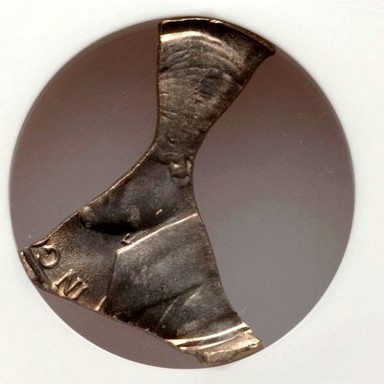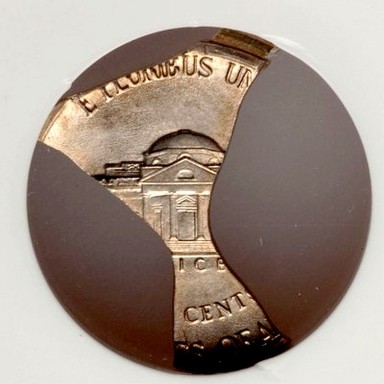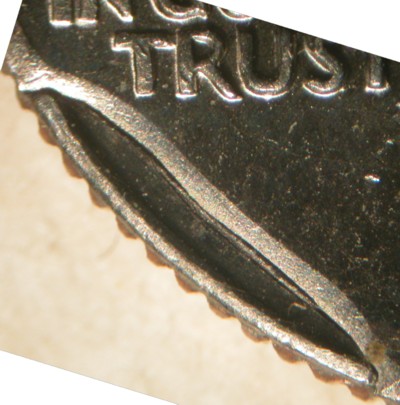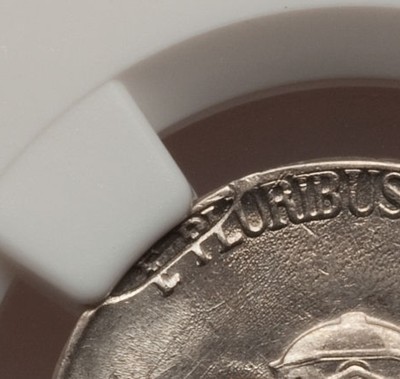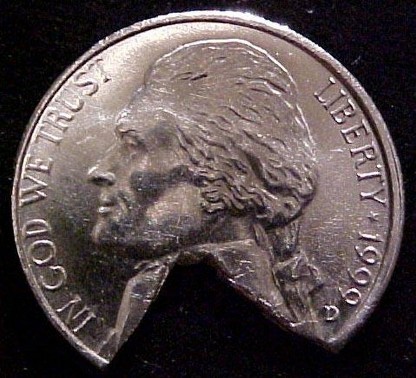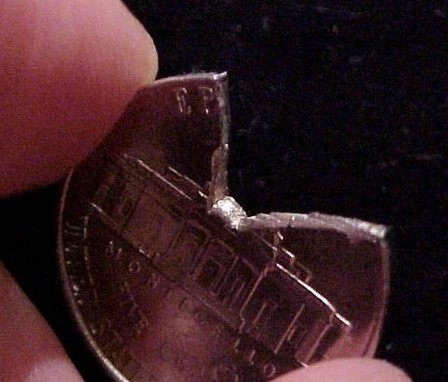Part V. Planchet Errors:
Blanking and Cutting Errors:
Bowtie clips:
A bowtie clip consists of two very large curved clips at opposite poles. It produces a coin with expanded ends and a narrow waist.
There are three types of bowties — chopped webbing, re-punched normal strip and opposing curved clips.
Chopped webbing refers to the wastage from the blanking process. A coin metal strip that has passed through the blanking press is full of tightly-packed, regularly-spaced holes. The strip is chopped up before the pieces are sent to a furnace to be melted down and recycled. Occasionally, a piece will remain behind in a tote bin or conveyor and can subsequently get mixed in with a batch of planchets.
A struck piece of chopped webbing can be triangular or bowtie-shaped. Only the latter shape earns the moniker “bowtie clip”. The two curved clips can be roughly equal in size or very unequal in size. It all depends on the size of the piece and the location of the chopped ends. In addition to the two large clips, a bowtie clip of this type may have a small curved clip at one or both ends.
A bowtie clip derived from normally-punched strip that has been repunched will show a very narrow waist. One or both ends of the bowtie will show a small curved clip that is often converted into a straight-looking edge by the expansion of the coin. Shown here is an undated nickel that would fall into this category of bowtie. The larger end shows the small clip.
Images courtesy Heritage Auctions
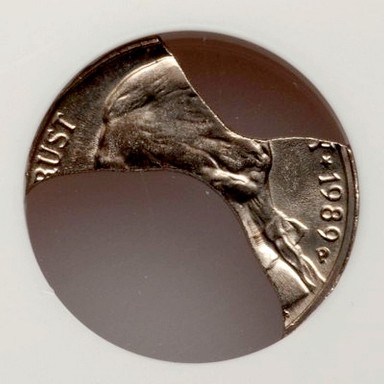
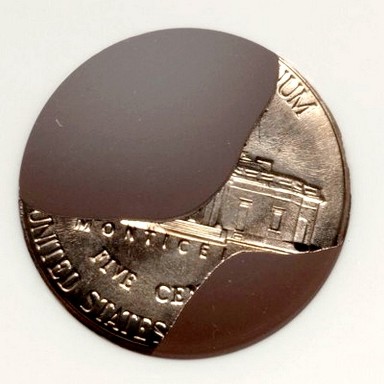
The last, and most common category of bowtie clip is a coin that simply has two large, curved clips at opposite poles. Both ends are convex; neither shows a small curved clip. The waist is usually wider (often much wider) than the other two types of bowtie clips. These bowtie clips, as well as the vast majority of curved clips, are derived from strip where the holes were improperly-spaced and wider apart than normal.
Shown here is a 1989-P nickel that falls into this last category of bowtie.
Images courtesy Heritage Auctions
